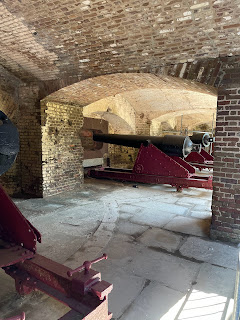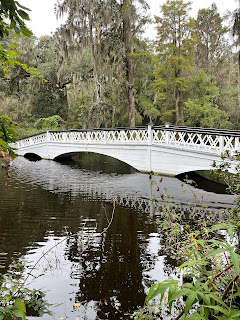Today we went out to Patriot Point to visit the USS Yorktown and Fort Sumter. The Yorktown is a WWII aircraft carrier and she served in the Pacific between the bombing of Pearl Harbour and the end of the war. She was modified in the 1950s to launch jets and was an anti sub patroller during the Cold War as well as serving in the Vietnam War. In December 1968 she recovered the capsule and astronauts from Apollo 8, before retiring in 1970. The Yorktown is now a floating museum. We had a very knowledgeable tour guide and we explored the hangar deck, with a number of aircraft, the lower decks to see how the sailors on board lived and worked, and the flight deck. We took a self-guided tour of the engine rooms and the upper levels, including the bridge.
We then took a harbour boat ride to Fort Sumter. The fort was where the first shot was fired which began the US Civil War. President Lincoln had been elected on a platform of abolishing slavery. This caused South Carolina to secede from the Union, followed by most of the Southern states. At that stage, the Union held Fort Sumter, in the middle of the harbour entrance, surrounded by Confederate forces in the other forts, and on land. On April 12, 1861, the first shot was a shell that burst over Fort Sumter, to signal the other forts to begin the attack. The bombardment lasted about 36 hours until the Union agreed to evacuate the fort. To that time, despite the barrage, there had been no casualties. On leaving the fort, Major Anderson decided to have a 100-gun salute to the Union Flag before lowering it. At shot 47, a misfire killed Private Daniel Hough, making him the first casualty of the war.
The fort remained in Confederate hands until close to the war's end when Confederate forces evacuated Charleston. An “end of the war” ceremony occurred at the Fort on April 14. 1865 (exactly 4 years to the day of the start of the war) when the now Major-General Anderson raised the original flag that he had lowered when he evacuated over the fort. The event was completely overshadowed by the assassination of Lincoln that evening.
Although the fort was pretty much reduced to rubble, an additional
battery was constructed on the site in 1898.
This never saw action, and the fort was decommissioned in 1947.
























































